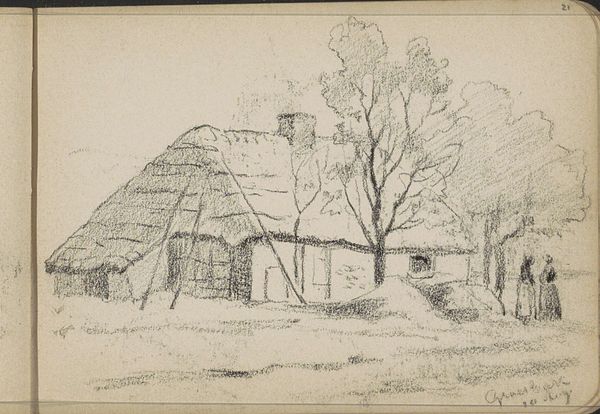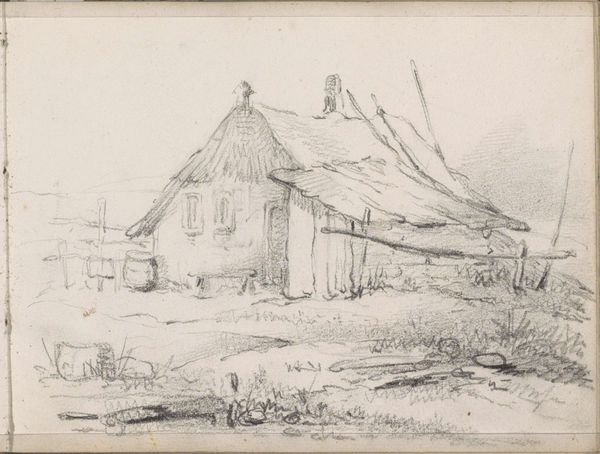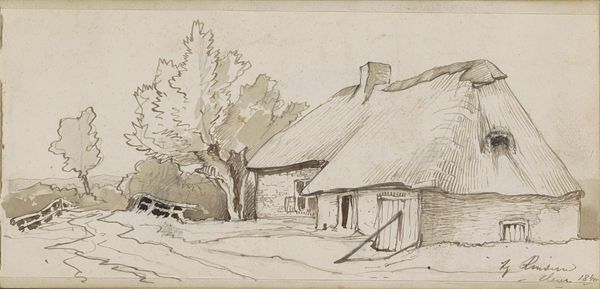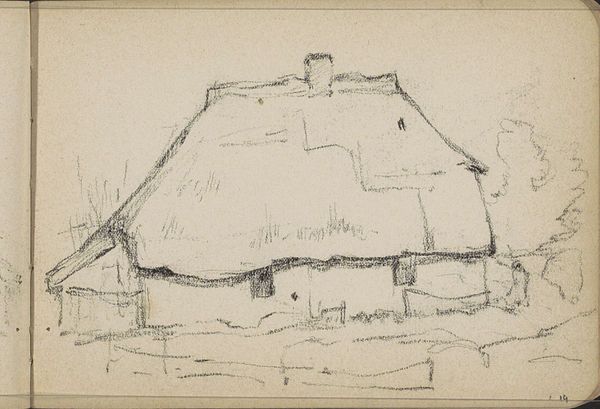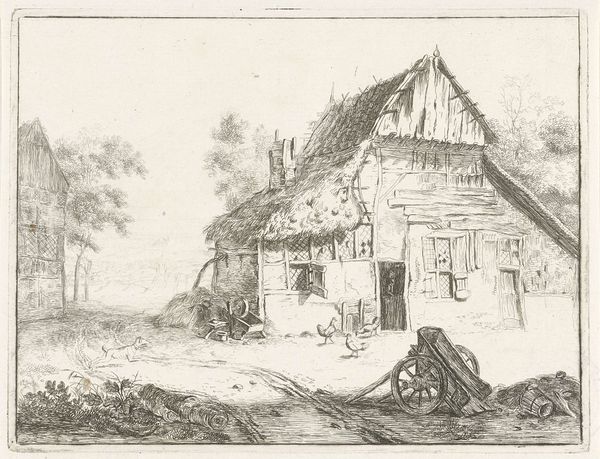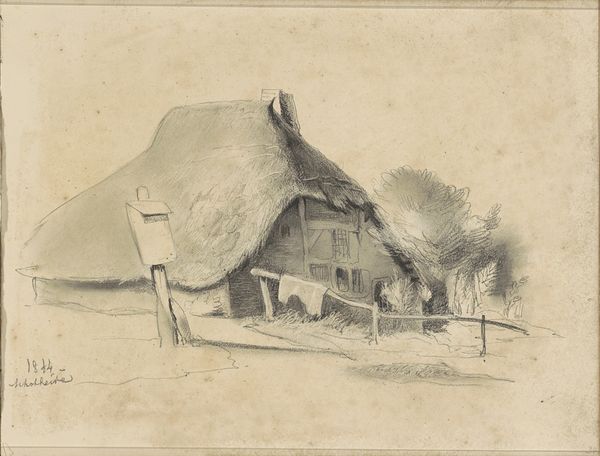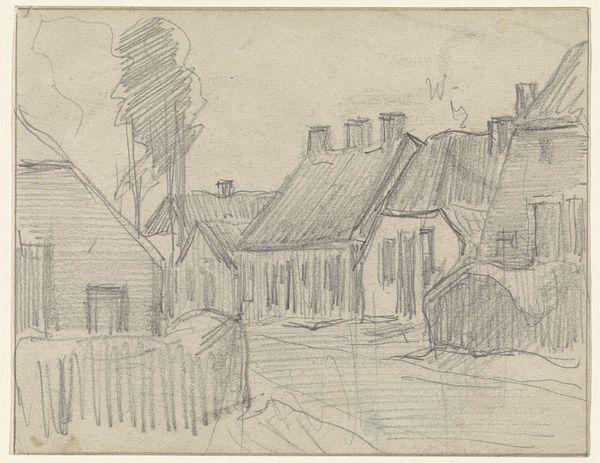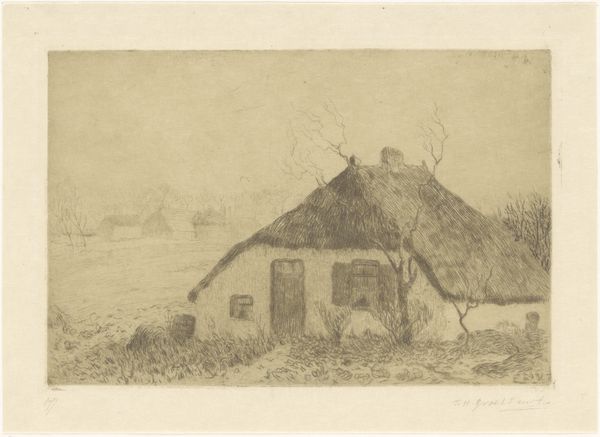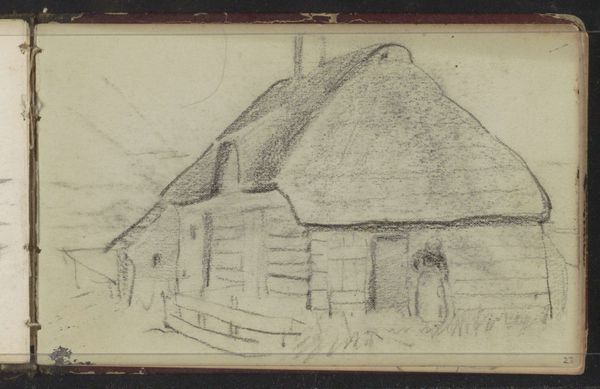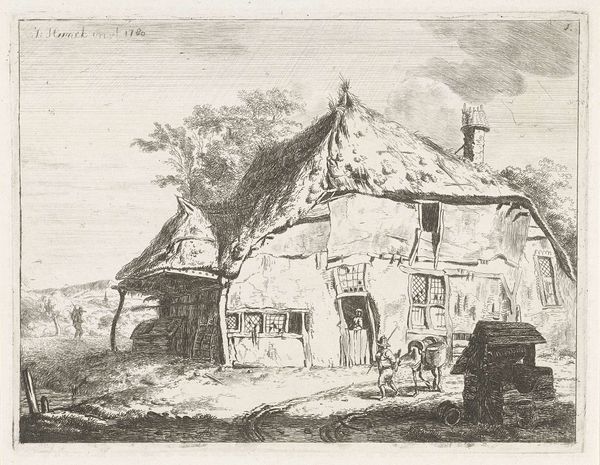
drawing, paper, pencil
#
drawing
#
aged paper
#
quirky sketch
#
pen sketch
#
sketch book
#
landscape
#
paper
#
personal sketchbook
#
sketchwork
#
pen-ink sketch
#
pencil
#
pen work
#
sketchbook drawing
#
sketchbook art
#
realism
Dimensions: height 113 mm, width 159 mm
Copyright: Rijks Museum: Open Domain
Curator: Looking at this drawing, I'm struck by the overwhelming sense of coziness, if that makes sense. There's a comforting feel to it. Editor: Yes, there is something intimate about this sketch, especially knowing it comes directly from Willem Cornelis Rip's sketchbook. Created around 1896-1897, this piece, "Farmhouse with a Thatched Roof," is executed with pencil and pen-and-ink on paper, and what we see represents far more than just rural architecture. Curator: The texture he achieves with the cross-hatching and varied line weights is really effective. Note how the heavy, dark strokes capture the density of the thatched roof, contrasted with the light touches that suggest the aging paper of the sketchbook itself. Editor: Exactly. But beyond that careful observation, think about what farmhouses, especially those with thatched roofs, represented at this time. These weren't simply buildings; they were symbols of rural life, deeply connected to the identity of agrarian communities, but under intense socio-economic pressure as urbanisation gathered pace. Curator: True, but even divorcing ourselves from that socio-economic element for a moment, the artist’s skill in manipulating line creates such depth and dimension. See the simple fence-like structure in front of the main part of the house—barely rendered, but contributing hugely to the recession of space. Editor: And Rip likely wasn't neutral in depicting it. Artists like Rip often presented these scenes with a romantic lens, idealising the hard labor and class divisions of rural life to offer a vision of authentic, simple living amidst growing industrial society and its emerging inequalities. Curator: Even the choice to work in sketch format rather than a more finished painting can be read as something significant in this regard. There is no high art pretence here; it captures a candid and intimate reflection of something true and accessible, almost journalistic. Editor: An important reminder that visual observation and art technique can tell us many stories and provoke many questions. Curator: Agreed, let’s move on to the next piece and see what else awaits!
Comments
No comments
Be the first to comment and join the conversation on the ultimate creative platform.
